BIRD WATCHING AT KAUSANI

The Himalayan zone is home to a variety of different birds that are endemic to the area. Kausani being surrounded by natural deodar and pine forests, as well as green farmlands in the nearby Someshwar and Garur valleys, attracts different birds like jays, tits, warblers, the pheasants and many more.
KAUSANI VILLAGE TREK

Being a small hillstation, away from the central town are pockets are small villages that can be reached by different trails taking you through natural forests, farm lands and some very traditional typical Kumaoni stone homes. You will find villagers quite friendly and willing to engage in conversations with the inquisitiveness. The trails are also through green zones while having the Himalayas as the backdrop almost always.
BON FIRES

Evening bon-fires are a great way to catch up with your friends in the pleasant weather. Sharing stories, playing music, singing songs and enjoying evening snacks usually is the apt end to the day. Even in the cold winters in December and January, bon-fires are always in high demand by guests as you get the adventure of the cold weather and the cozy warmth of the fire as the day winds down.
SOMESHWAR TOWN

The Someshwar town is nestled in between the beautiful Someshwar valley, a length of over 35kms of terraced paddy fields that turn lush green in the monsoons. The town, at a distance of only 12 kms, also has a 12th century jyotirlinga Shiva temple that is a must visit. The river Kosi also undulates through the town and valley offering many locations where you can plan a picnic and enjoy the chilled waters of the river.
BAIJNATH TEMPLE
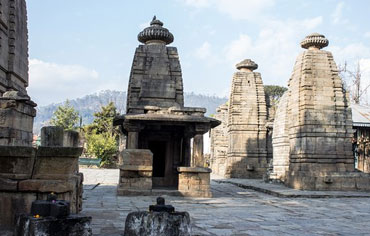
The Baijnath temple, 12kms on the opposite direction to Someshwar, is key historic place in Uttarakhand as it was the seat of the Katyur dynasty who established the foundations of the Kumaoni kingdom at the banks of the Gomti River. The Baijnath temple was built by the newly established kingdom in the 12th century and is a cluster of 18 temples.
BAGESHWAR
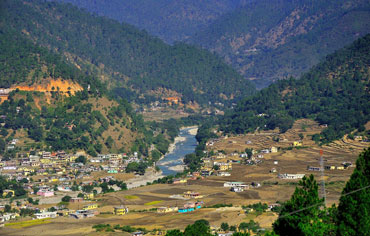
Bageshwar is situated further ahead of Baijnath by another 25kms and is situated at the confluence of Gomti and Sarayu rivers. The temple of Bagnath is located here. It is said that Lord Shiva appeared in the form of a tiger (bagh) here and hence the established temple has the name of Bagnath. The annual Uttarayani mela in January is even more ancient and witness to the trade of Chinese goods by Tibetians with the Indian traders who would have brought their wares, spices etc from the plains. The mela is considered to be nearly continuous for over 2000 years.
RUDRADHARI FALLS
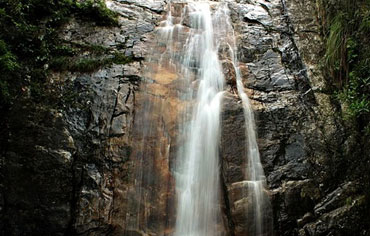
At a distance of 6 km from Kausani, bounded by the paddy fields and green pine forests is the spellbinding Rudradhari Falls. Located on the trekking way to Adi Kailash region, one can also explore the mysteries of the ancient caves lying near the falls.
According to the legend, this place holds a connection with Lord Shiva and Lord Vishnu. The Shiva Temple of Someshwar lies in the proximity to the waterfalls.
To reach the falls you have to hike through a forest trail for about 2 kms.
KAUSANI TEA GARDEN
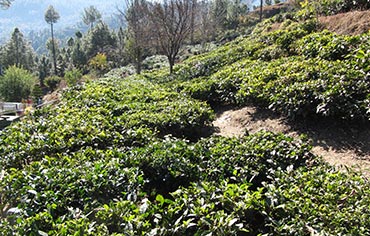
The tea garden in Kausani is one of the oldest in the country as initial experiments of farming tea across the country by the British. While not as large as the industries in Assam or Nilgiris, the herbal and green tea varieties here are full of flavour. The primary gardens are located about 3 kms from center Kausani and can be a morning/ evening walk for those who like to explore on their two feet.
ANASAKTI ASHRAM
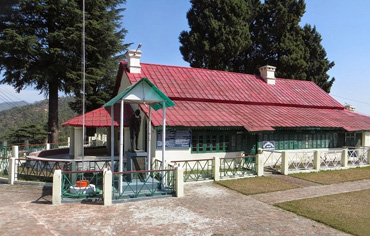
One of the most popular destinations, this place is also fondly known as Gandhi Ashram. It was during has stay here that Gandhiji's annotations about Anashakti Yog known as 'Geeta Anashakti Yog'.
Today, it attracts a large crowd of tourists and has been converted into a study, research center, and museum along with accommodation facility with 24 rooms. A place with great historical importance, the ashram also has a provision of kitchen and a library.
